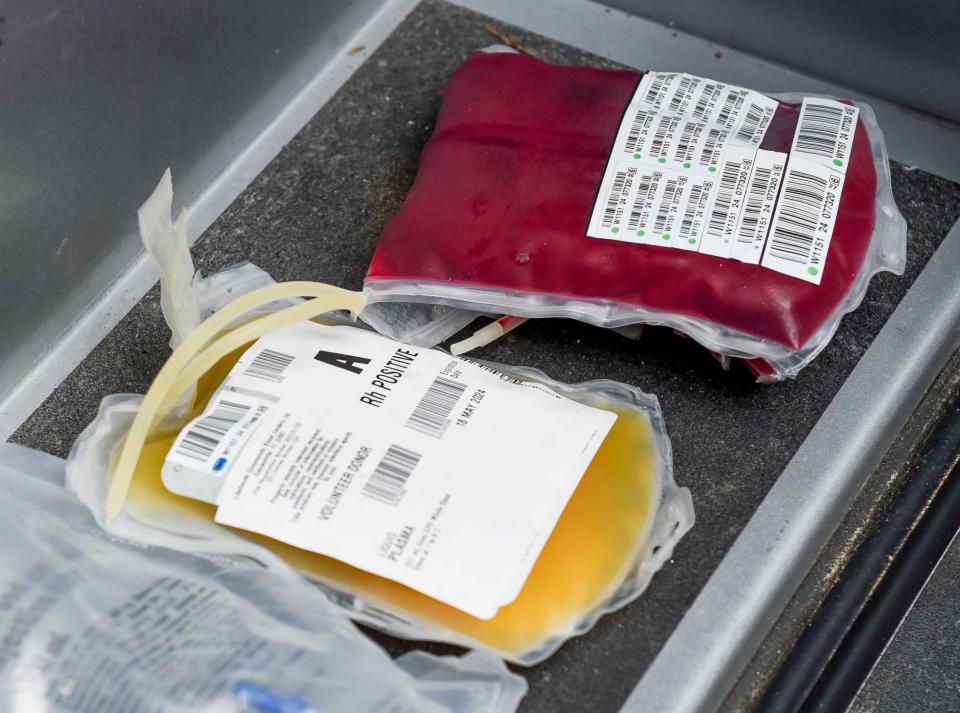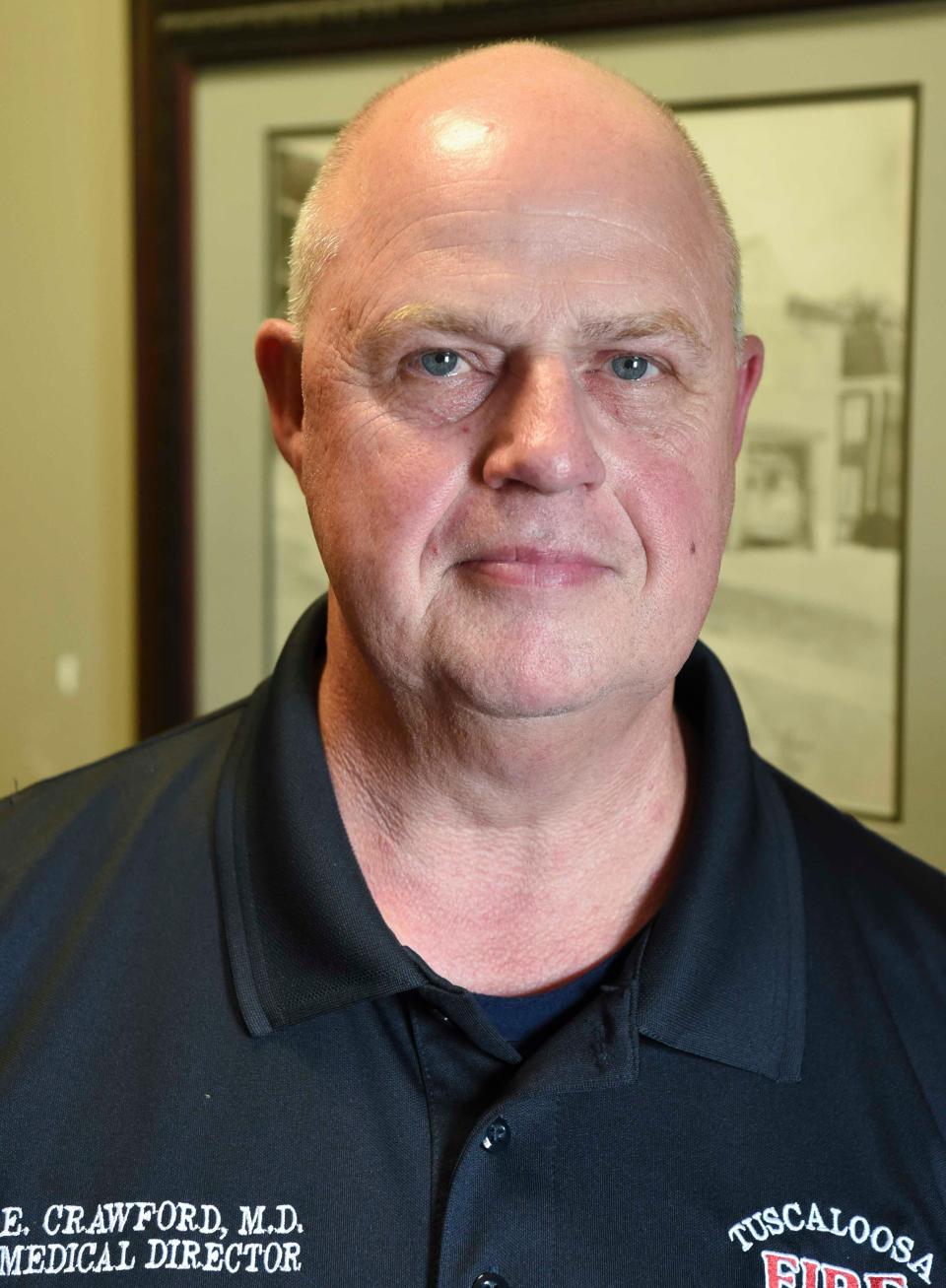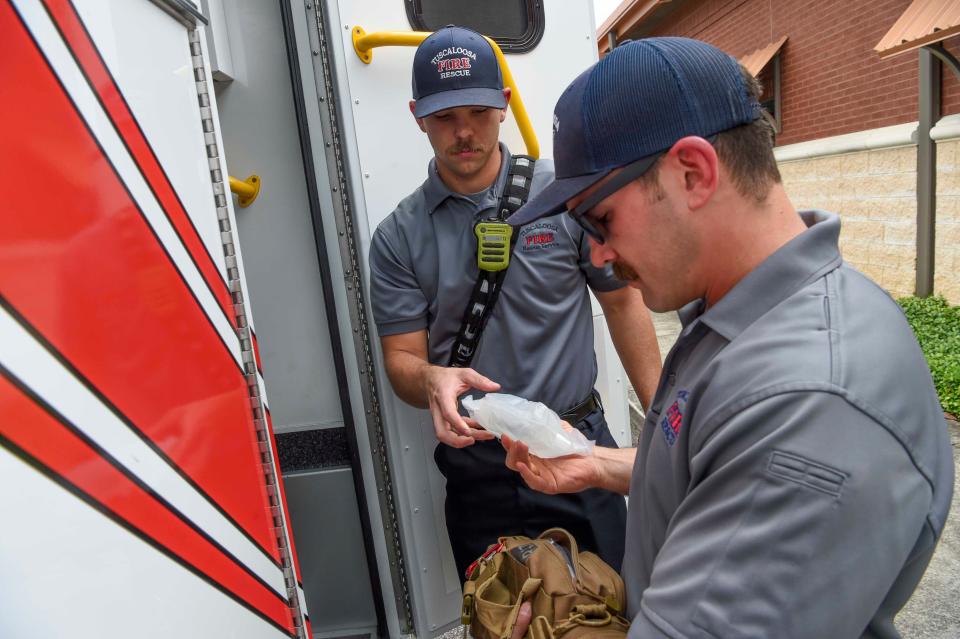Tuscaloosa Fire Rescue says carrying blood, plasma could save lives
In the days before extensive emergency medicine was practiced at the scene, ambulances simply picked up patients and took them to a hospital as quickly as possible. Emergency medical service has come a long way since then and Tuscaloosa Fire Rescue is taking the next step in that continually evolving field.
Three rescue trucks and two pumpers have begun carrying blood and plasma to give critically injured patients a better chance at survival.

"Some things never change, said Deputy Chief Chris Williamson. "For a really seriously injured patient, the best thing we can still do for them even today is get them to the hospital rapidly. That is why we have five units carrying this. We don't want there to be any delay in transport.
"The idea, unless someone is trapped and can't be immediately transported, is our paramedic will get in the back of the ambulance and do this on the way to the hospital," he said.
"This is the direction EMS is headed. Over the last few decades, whenever we have had someone who is seriously injured and has bled a lot, all we have had to give them is normal saline, salt water. While that can raise the patient's blood pressure, it does not carry oxygen, and does not replace what they have lost. It's not as good for the patient and blood products," Williamson said.
Dr. Elwin Crawford, the medical director for Tuscaloosa Fire and Rescue who also is an emergency department physician at DCH Regional Medical Center, said the department is very excited to have the blood program.

"There is a growing body of evidence that prehospital blood and plasma administration for severely traumatized patients can really reduce their mortality," Crawford said.
Crawford said there were probably fewer than 10 departments in the state that are now carrying the blood products. They will be used for persons who have experienced heavy blood loss as a result of traumatic injury such as an automobile or industrial accident or a shooting, but people with gastrointestinal bleeds could also have blood administered if their condition warrants it.
"It's for those trauma patients who are severely injured and who have suffered acute blood loss. It's really for the sickest of the sick," Crawford said.
Severe blood loss can produce other negative effects as the body tries to compensate for the loss. Crawford said that increased heart rate and respiratory rate happen when the blood loss is severe as the body attempts to push the remaining blood to prevent death. Kidney failure is another side effect of severe blood loss, as are heart attacks, particularly in elderly patients.

"What are you losing? You are losing blood, so you need to replace blood. We have, for years, started IVs with normal saline, which is basically salt water, but you are not losing salt water, you are losing blood. So what do you want to replace, you want to replace blood," Crawford said.
Blood and plasma will be administered simultaneously since each component does a different job. The plasma is responsible for helping the blood clot, so the patient does not bleed to death while the blood replenishes what the body has lost. The department is carrying O negative blood, the universal blood type that can be transfused into any patient. The blood is purchased from Life South and is stored in temperature-controlled units aboard the designated fire department vehicles.
Both Williamson and Crawford praised the Tuscaloosa City Council for making available the money to finance the program. Williams said the initial budget for the program is $35,000 to $40,000 per year but that could change based on how often the blood and plasma are administered. Current projections indicate a use of the blood product about once every week to 10 days, according to Williamson.
"I think, from our standpoint, this really puts Tuscaloosa Fire and Rescue and the City of Tuscaloosa on a different realm of care and certainly within the higher echelon of pre-hospital providers. Not many people in the state are carrying blood," Crawford said.
"I think the citizens are going to reap the benefits of this. I do think that once we start to use it more you will see some folks survive some injuries that, in the past, they would not survive," he said.
Reach Gary Cosby Jr. at gary.cosby@tuscaloosanews.com.
This article originally appeared on The Tuscaloosa News: Tuscaloosa Fire Rescue to offer life-saving blood, plasma to patients

